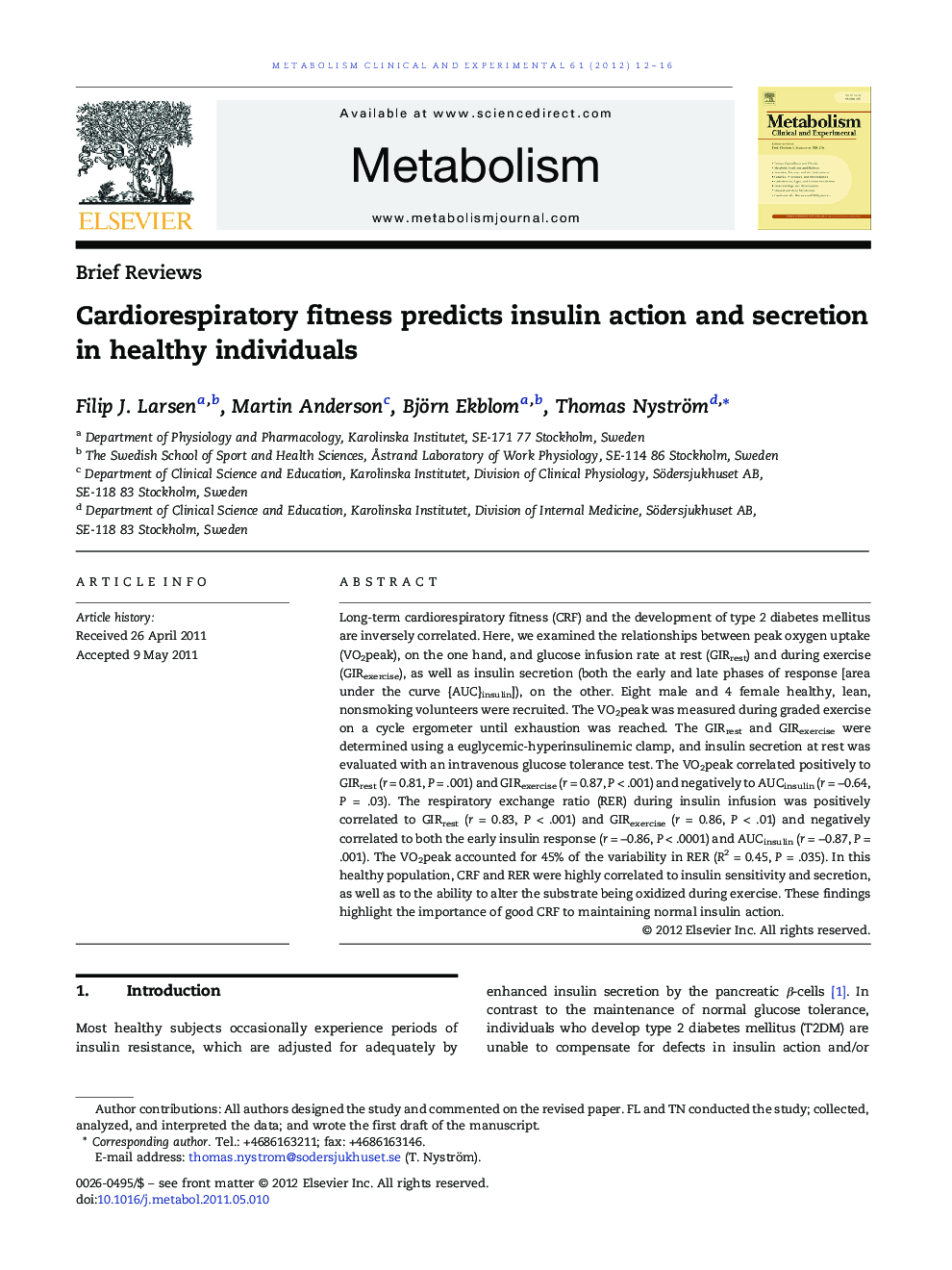| Article ID | Journal | Published Year | Pages | File Type |
|---|---|---|---|---|
| 2806230 | Metabolism | 2012 | 5 Pages |
Long-term cardiorespiratory fitness (CRF) and the development of type 2 diabetes mellitus are inversely correlated. Here, we examined the relationships between peak oxygen uptake (VO2peak), on the one hand, and glucose infusion rate at rest (GIRrest) and during exercise (GIRexercise), as well as insulin secretion (both the early and late phases of response [area under the curve {AUC}insulin]), on the other. Eight male and 4 female healthy, lean, nonsmoking volunteers were recruited. The VO2peak was measured during graded exercise on a cycle ergometer until exhaustion was reached. The GIRrest and GIRexercise were determined using a euglycemic-hyperinsulinemic clamp, and insulin secretion at rest was evaluated with an intravenous glucose tolerance test. The VO2peak correlated positively to GIRrest (r = 0.81, P = .001) and GIRexercise (r = 0.87, P < .001) and negatively to AUCinsulin (r = −0.64, P = .03). The respiratory exchange ratio (RER) during insulin infusion was positively correlated to GIRrest (r = 0.83, P < .001) and GIRexercise (r = 0.86, P < .01) and negatively correlated to both the early insulin response (r = −0.86, P < .0001) and AUCinsulin (r = −0.87, P = .001). The VO2peak accounted for 45% of the variability in RER (R2 = 0.45, P = .035). In this healthy population, CRF and RER were highly correlated to insulin sensitivity and secretion, as well as to the ability to alter the substrate being oxidized during exercise. These findings highlight the importance of good CRF to maintaining normal insulin action.
